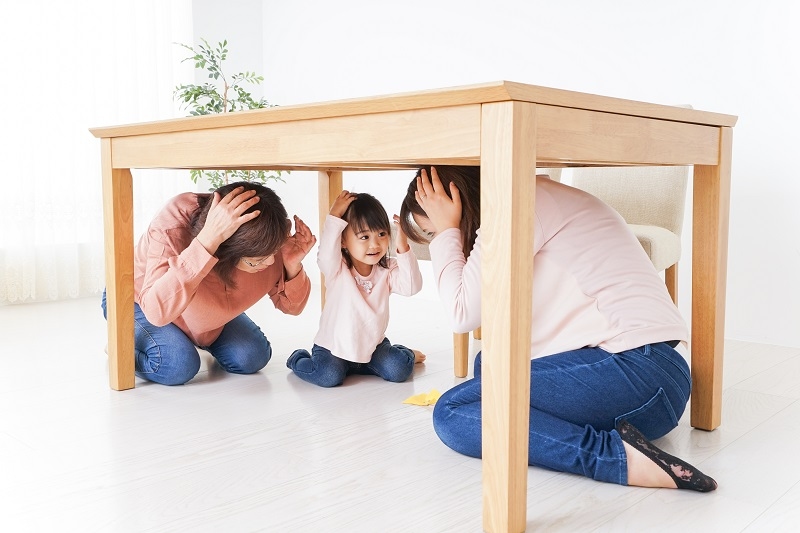
Earthquakes are thus among the most destructive and unpredictable forces of nature. They strike without warning and may cause massive destruction, leaving families exposed and communities in ruins. Although we cannot prevent earthquakes from happening, there are ways through which we can mitigate the ways they affect our homes and the properties we live in. By adopting critical earthquake safety practices, you can effectively enhance your survival and safeguard the people you care about from an earthquake. This blog will take you through the most essential earthquake safety practices every home must adhere to, highlighting emergency preparedness, home safety, and disaster readiness.
An earthquake is a trembling of the ground caused by the release of energy through the movement of tectonic plates under the surface of the earth. They vary in severity from one that only shakes the ground to one that can destroy buildings and give rise to tsunamis, such as an order of nothing found this far off. The secret to surviving an earthquake is preparation. Being prepared for emergencies is not merely having a plan; it's having a safety culture in your home. By spending time to prepare, you can minimize the risk of injury, safeguard your property, and keep your family safe.
One of the most significant earthquake safety precautions is possessing a soundly conceived emergency plan. Your plan must include the following:
An emergency kit is important in earthquake preparedness: it ensures that your family has essential supplies after a disaster. Start with at least one gallon of water per person per day, for at least three days, since clean water may not be available. Second, stock up on non-perishable foods such as canned goods, energy bars, and dry snacks to keep your family going for a couple of days. Include a first aid kit with plenty of band-aids and antiseptics, medications, and prescription drugs family members might need. It is extremely crucial to have flashlights and backup batteries for blackouts; a multi-tool, wrench, and whistle could also be very useful for utility and warning. Key documents in a watertight bag or enclosure should be identification, insurance documents, and medical files. Warm clothing and blankets are essential for cold-weather protection, thereby ensuring comfort and safety for your family during an emergency.
Safety for your home takes precedence when gearing up for a pending earthquake. Therefore, going through the correct security precautions could possibly minimize casualties and level down some of the damage to your home. The more significant safety measures that have to be considered are:
Earthquakes have the potential to severely compromise gas, water, and electric lines, presenting potentially deadly dangers. Being aware of how to turn off these utilities is an essential safety step that can save lives by averting fires, flooding, and electrocution. Begin by finding your gas shut-off valve and having a wrench handy; if you notice a gas smell or hear hissing, immediately turn off the valve and leave your house. Become aware of the location of the master water shut-off valve to avoid contamination or flooding in the event of broken pipes. Also, know how to turn off electricity to your house at the electrical breaker box to avoid electrical fires. By doing so, you ensure that you will be able to respond quickly and minimize hazards after an earthquake.

Keeping abreast of earthquake hazards and safety measures is one of the few pillars of preparedness for disaster. Sign up for local emergency notification systems in your area to obtain your Avise and local government alerts in real-time regarding seismic activity and other disasters. Learn about the particular earthquake hazards in your immediate area, such as the probability and effect of such disaster events, to customize your readiness efforts. Always respect official safety guidelines from major agencies such as FEMA and the American Red Cross, because they provide some really good and guaranteed up-to-date information to keep you secure.
Knowing what to do in an earthquake can be very critical. The best technique is Drop, Cover, and Hold. On hands and knees, keep safe under a sturdy piece of furniture, and remain there until the shaking stops. This position protects you from falling objects and debris. Stay indoors, do not run outdoors, and you will be less likely to suffer injuries from debris. There is no special protection if you seek accommodation in doorways; doorways are not any safer than any other part of a modern house. When outside, go to an open area away from buildings, trees, and power lines. If you're in a vehicle at this time, pull to the side of the road; do not stop under bridges, overpasses, and power lines.
Preparedness for earthquakes is not only something you as an individual do but a whole community. You may join local preparedness programs, Community Emergency Response Teams (CERT), to network with people who can actually promote preparedness for disasters. Tell neighbors and friends about earthquake safety measures because the most informed community can act best in emergencies. In many cases, consider assisting the vulnerable populations like elderly or disabled neighbors, who do not have strong immediate backup, during those distressing times. Build a strong community and develop resilience, prepared to go through the challenges brought on by an earthquake.
Earthquakes are touching reminders of the raw power of nature, but they do not have to always invoke fear. With a few handy preparations, you can reduce the risks to your family and home. Developing an emergency plan and building a kit, securing your home, and practicing survival skills help everyone to survive in an earthquake-like disaster and more. Always remember that disaster preparedness is not one-time but ongoing. Remain informed, remain prepared, and remain safe. Your actions today could make the difference when the ground starts shaking and everyone is panicking. So follow these strategies to avoid common pitfalls and be prepared for any situation.
This content was created by AI